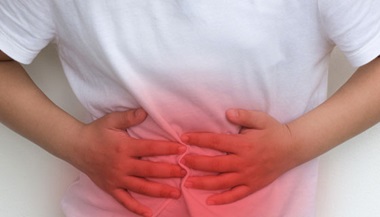Pyloric Stenosis
What is pyloric stenosis?
Pyloric stenosis is a narrowing of the pylorus, the opening from the stomach, into the small intestine. This type of blockage is also referred to as a gastric outlet obstruction. Normally, food passes easily from the stomach into the duodenum through a valve called the pylorus. In pyloric stenosis, the muscles of the pylorus are abnormally thickened, which prevents the stomach from emptying into the small intestine, and food backs up into the esophagus. The cause of the thickening is unknown, although genetic factors may play a role. The condition is usually diagnosed by the time a child is six months old.
Symptoms
Vomiting is the first symptom in most children:
Vomiting may occur after every feeding or only after some feedings.
Vomiting usually starts around three weeks of age but may start any time between one week and five months of age.
Vomiting is forceful (projectile vomiting) and the vomit itself is usually clear or has the appearance of partially digested (curdled) milk.
The infant is hungry after vomiting and wants to feed again.
Other symptoms generally appear several weeks after birth and may include:
Belching
Constant hunger
Dehydration (gets worse with the severity of the vomiting)
Failure to gain weight or weight loss
Wave-like motion of the abdomen shortly after feeding and just before vomiting occurs
Diagnosis
The condition is usually diagnosed before the baby is six months old. A physical exam may reveal signs of dehydration. The doctor may detect the abnormal pylorus, which feels like an olive within the abdomen, when pressing over the stomach. An ultrasound of the abdomen may be the first imaging test performed. Other tests may include a barium X-ray to show the shape of the stomach and pylorus.
Treatment
The first form of treatment for pyloric stenosis is to identify and correct any changes in body chemistry using blood tests and intravenous fluids. Pyloric stenosis is always treated with surgery, which almost always cures the condition permanently. The operation, called a pyloromyotomy, divides the thickened outer muscle, while leaving the internal layers of the pylorus intact. This opens a wider channel to allow the contents of the stomach to pass more easily into the intestines.
A minimally invasive approach to abdominal surgery, called laparoscopy is generally the first choice of surgery for pyloric stenosis. To perform laparoscopic surgery, the surgeon inserts a rigid tube (called a trocar) into the abdominal cavity through a small incision (cut). The tube allows the surgeon to place a small camera into the abdomen and observe the structures within on an external monitor. The abdomen is inflated with carbon dioxide gas, which creates room to view the contents of the abdomen and to perform the operation. Additional rigid tubes are placed through small incisions and used to insert small surgical instruments into the abdomen. These instruments are used together with the camera to perform the operation. Tubes and instruments are removed when the operation is finished and the incisions are closed with sutures (stitches) that are absorbed by the body over time.
Laparoscopic pyloromyotomy generally involves the use of two or three trocars, and therefore usually requires two or three small incisions. If the surgeon decides that a laparoscopic operation is not the best way to treat the problems that are found in the operating room, then the operation will be changed (converted) to use an older surgical technique. Conversion to a nonlaparoscopic operation (called an “open procedure”) is rare and requires a larger incision, which may take longer to heal.
Recovery
In general, patients who receive surgical treatment for pyloric stenosis have an excellent recovery and very few suffer any long-term problems as a result of the disease. After surgery, your baby may be fed special fluids for one or two feedings and then breast milk or formula within 24 hours.
The hospital stay following a pyloromyotomy is typically one or two days, and the decision to discharge a patient is based on how well the child is recovering: specifically, if the baby is able to drink breast milk or formula without vomiting and has pain that can be controlled by medications taken by mouth. It is normal for a baby to vomit small amounts during the first day or two after surgery, but this should gradually improve. If your baby continues to vomit after you return home, call your doctor, because this may indicate continued blockage that is preventing the stomach from emptying normally.
Following all operations, parents or caregivers will be provided with a list of instructions, including specific warning signs that require communication with the surgical team or the attention of a doctor (either in an emergency department or a pediatrician’s office). Parents and other caregivers should refer first to written discharge instructions and use the telephone numbers provided to reach the pediatric surgery team to discuss any problems. These instructions are provided for specific patients after considering their medical conditions, the operation performed and how well the patient is recovering. Therefore, the instructions received at the time of discharge (or afterward over the phone or in the Pediatric Surgery Clinic) are the best resource for parents and caregivers if questions arise. In general, the following findings should cause concern and require a patient to be seen by a doctor:
Fever greater than 101.3 F by oral or rectal thermometer
Spreading redness, drainage (leaking fluid) from the surgical wounds that looks like pus.
Increased bloody drainage from wound. Small amounts of yellow, pink, or blood-streaked drainage that is absorbed by the wound’s dressing is normal, and should go away in three to five days.
Increasing pain that does not improve with medications prescribed at discharge.
Nausea and vomiting that prevents the child from drinking clear fluids – this can be associated with certain kinds of pain medication or antibiotics and may improve if these medications are taken with food.
The patient cannot move his or her bowels. Some medications cause constipation, so the surgical team may prescribe stool softeners or mild laxatives to help with bowel movements. If these treatments are ineffective, there may be a more serious problem.





